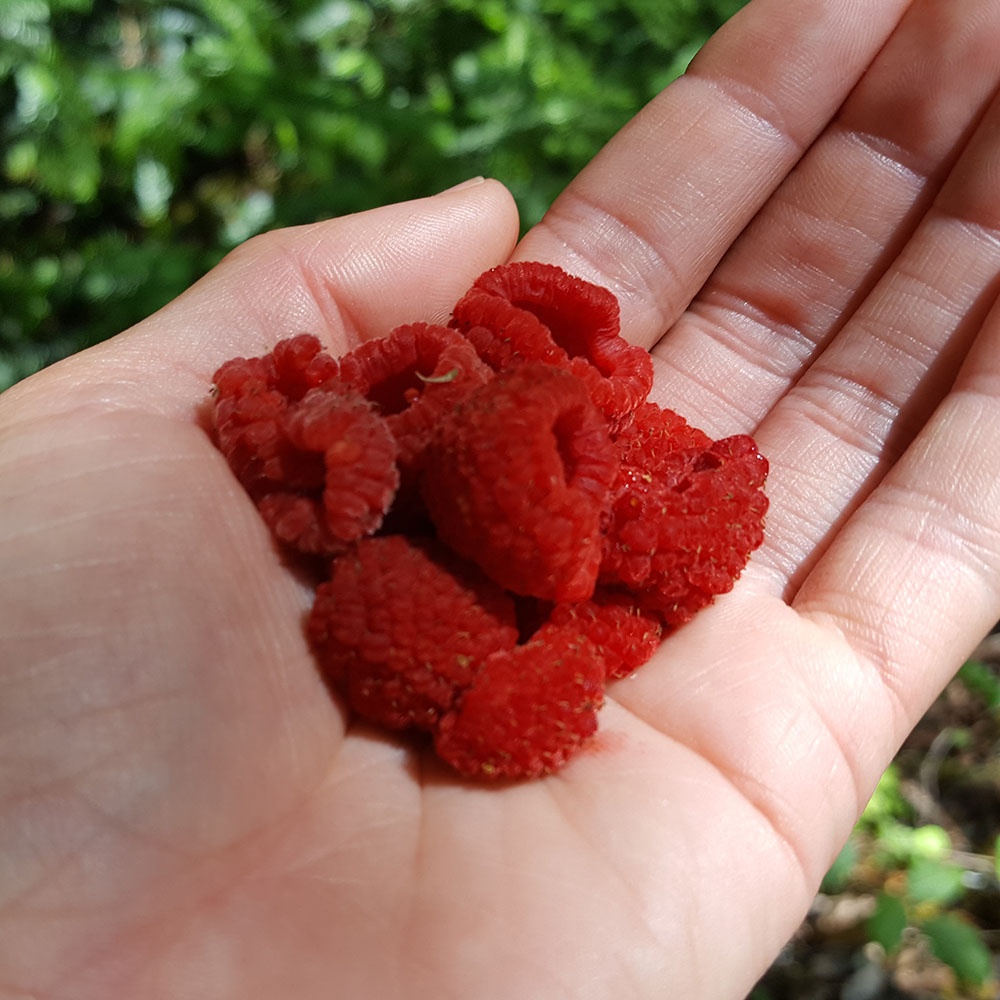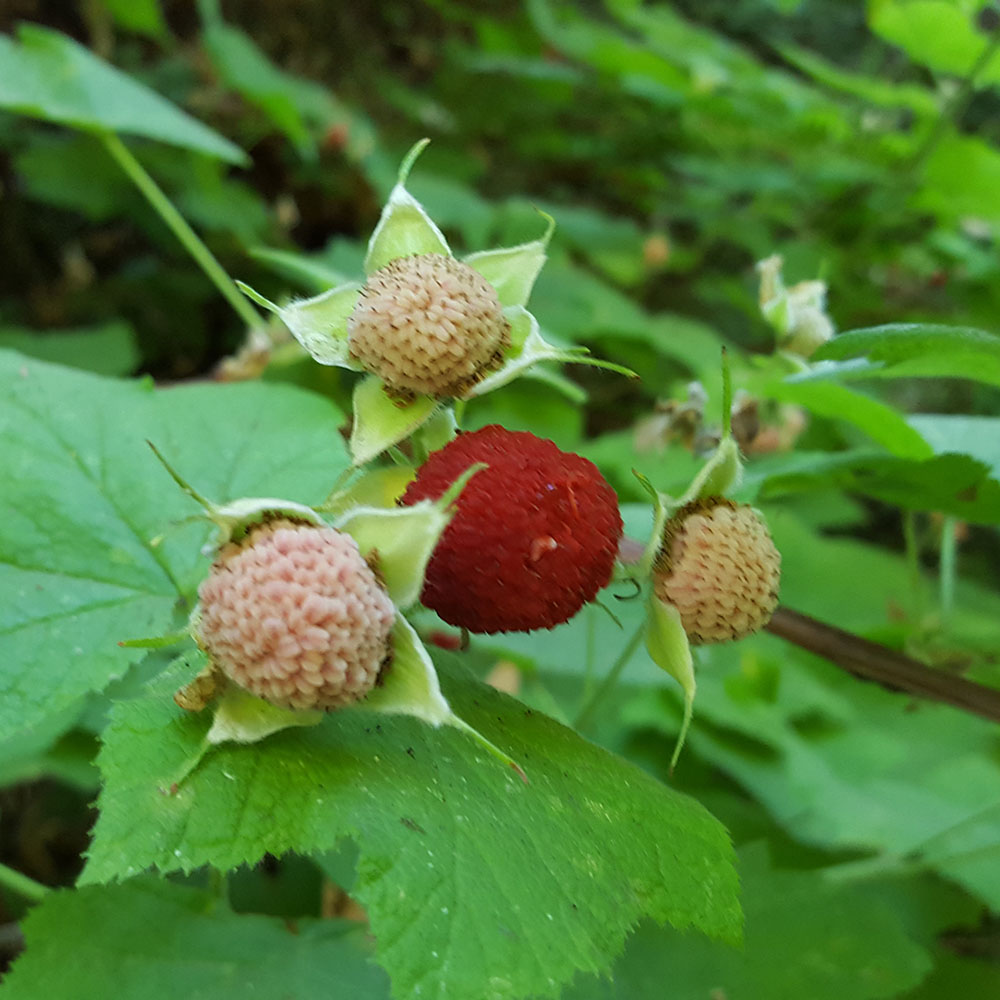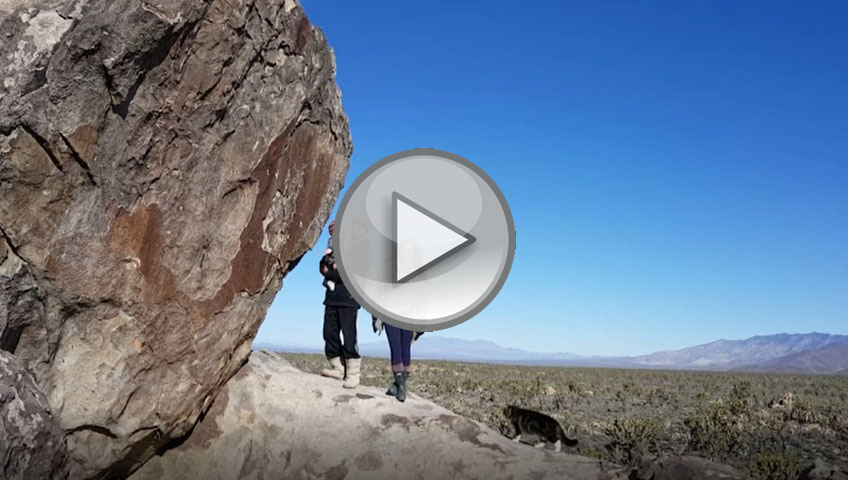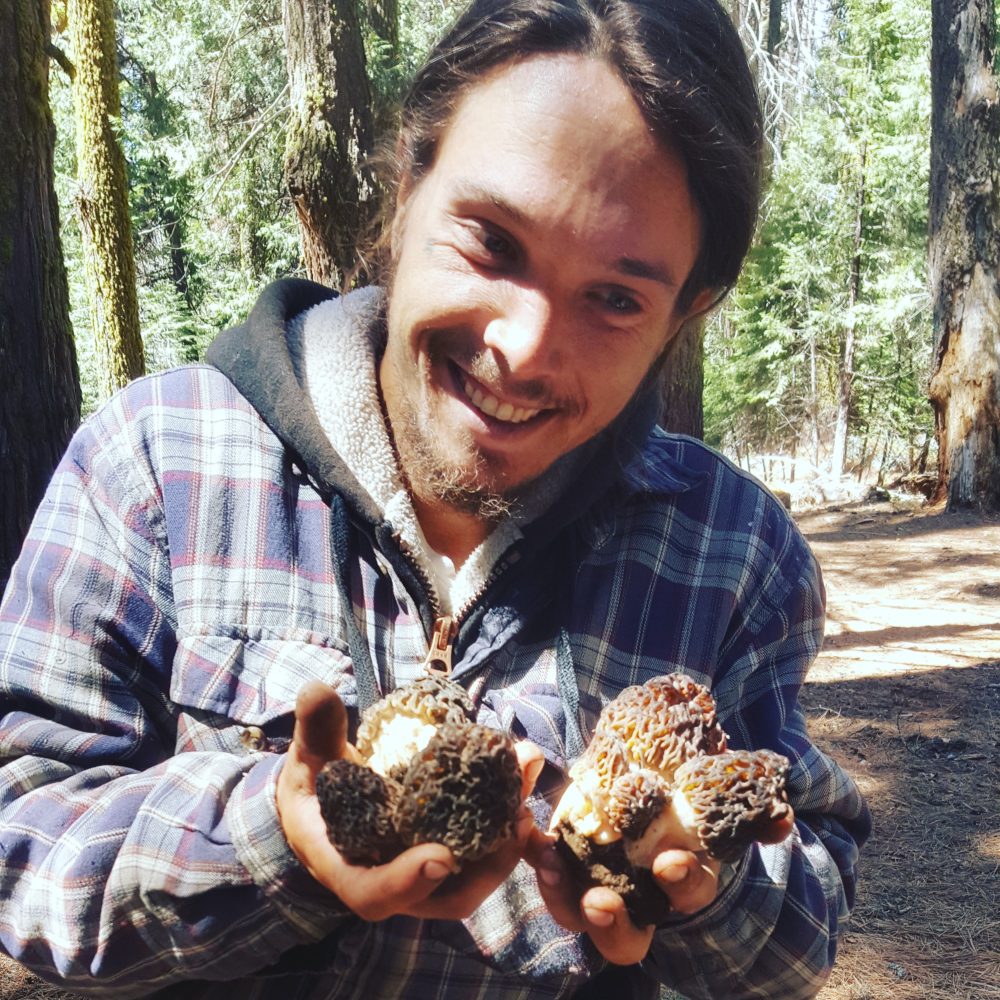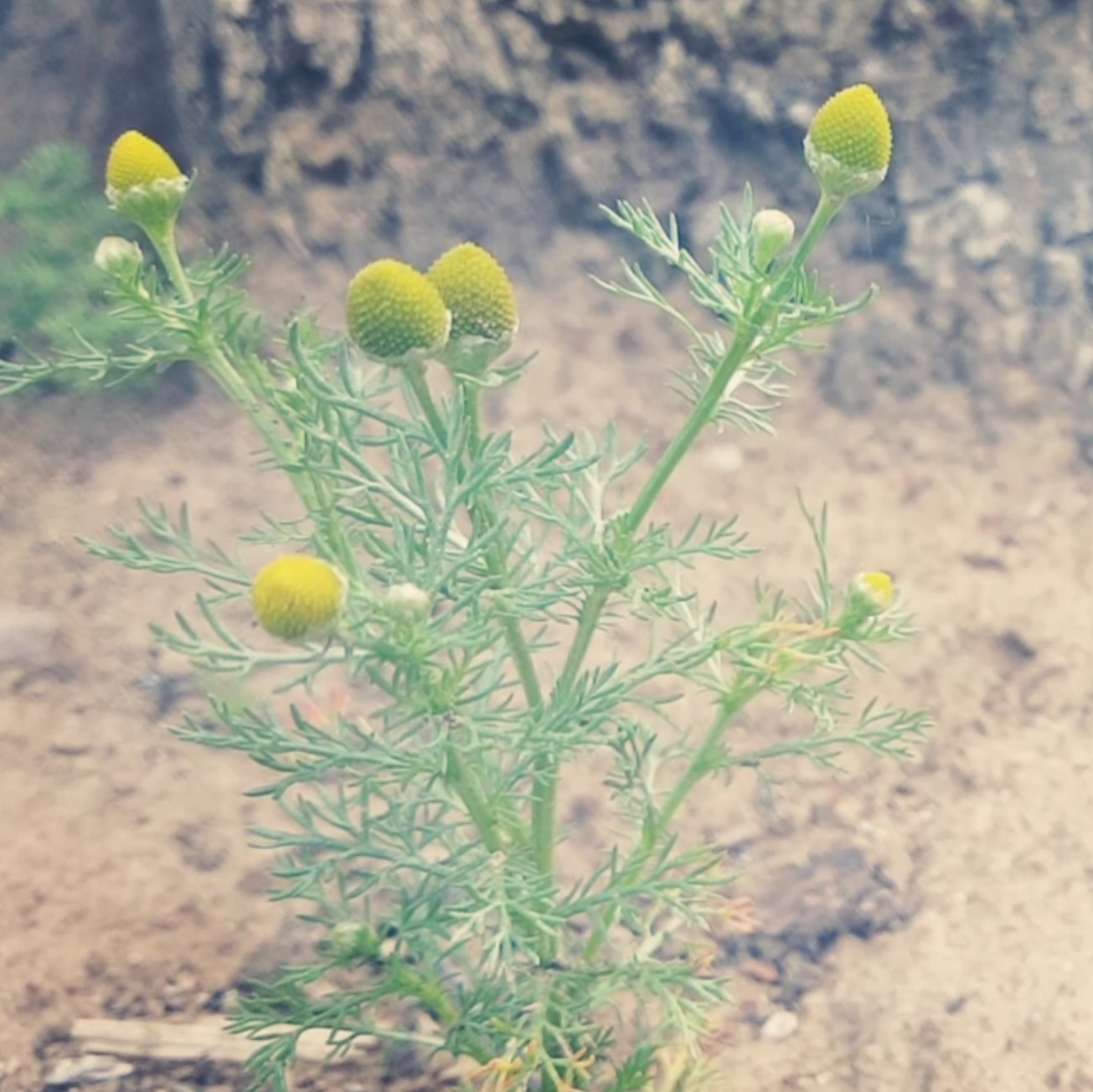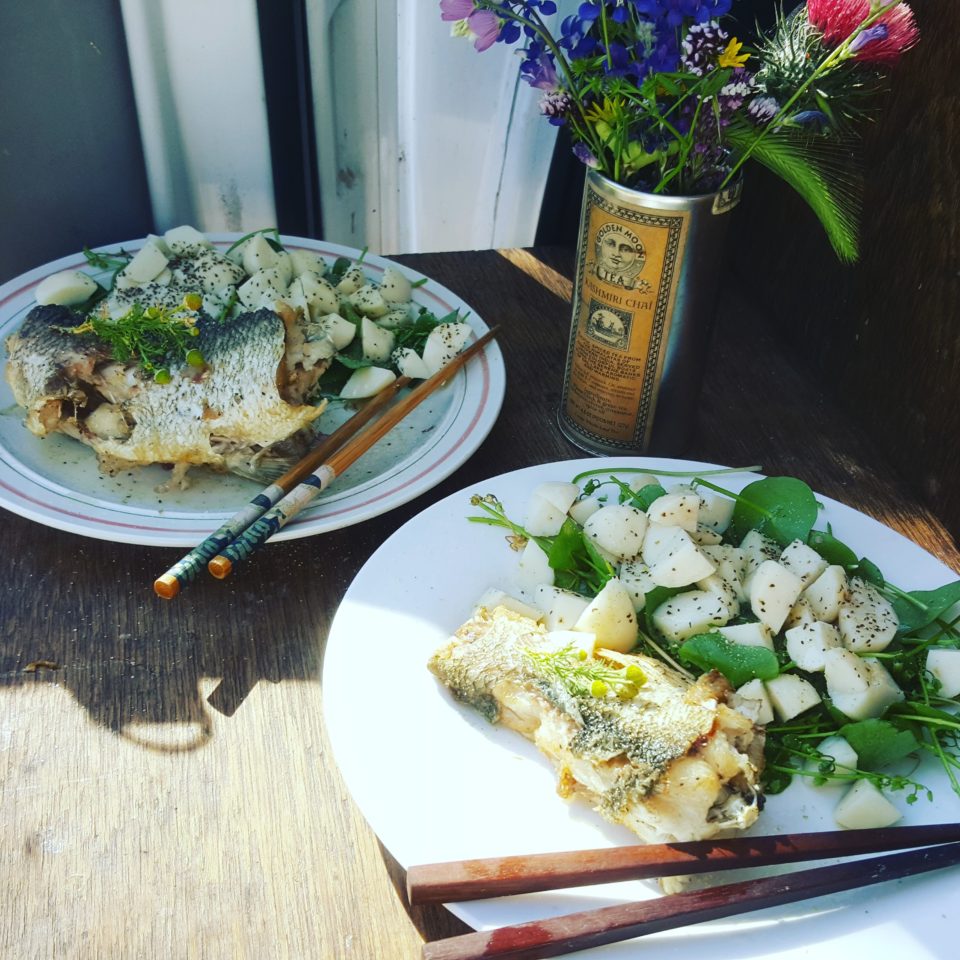Yummy Wild Red Thimbleberries – Rubus parviflorus
This was a native edible we learned about only a couple years ago. In early September we spotted a plethora of rasberry-like berries when backpacking to one of our favorite coast river spots. These red berries grew in large numbers beneath the redwoods in sunny patches.
The thimbleberry is native to western North America from Alaska south as far as California, New Mexico, Chihuahua, and San Luis Potosí. Its range extends east to the Rocky Mountains and discontinuously to the Great Lakes Region. It grows from sea level in the north, up to elevations of 3,000 m (10,000 ft) in the south. They are also delicious – both sweeter and tarter than your average raspberry. Thimbleberries have an upright shrub with multiple, thornless stems or canes reaching heights of 7’. The bark is distinct in that it peels in tiny fragments.
The sizeable leaves are between 4” – 8” across with five points, reminiscent of a maple leaf and are adorned with fine hairs are on either side, making it soft to the touch. No other member of the Rubus family has this characteristic leaf.
The Thimbleberry is Good for You
The young shoots, roots and leaves treat many ailments. Make a tea from the leaves or roots to treat nausea, vomiting, diarrhea and dysentery, for instance. It also tones and strengthen the stomach to increase appetite. Additionally, a poultice of the dried powdered leaves treats wounds and burns while the fresh leaves can be crushed and applied to treat acne. Also rich in vitamin C, thimbleberries boost your immune system. There are so many other health benefits of Thimbleberries.
They are a delicate berry similar to raspberries so pick them carefully or you can cause other ripe berries to fall off of the plant. Also, if they aren’t ripe they will be a little more difficult to pull off and if they are too ripe then they will end up as red mush on your fingers.
We harvested these delightful edibles along the river in the Jackson Demonstration Forest in mid-July
